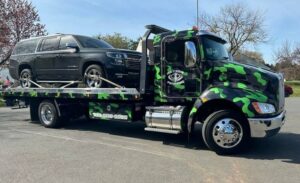 Tow trucks, now a ubiquitous sight on our roadways, have evolved significantly since their inception over a century ago. Their journey mirrors the advancements in automotive technology and the changing needs of roadside assistance. This article will discuss the rich history and transformation of tow trucks, reflecting on how they became an indispensable part of modern transportation.
Tow trucks, now a ubiquitous sight on our roadways, have evolved significantly since their inception over a century ago. Their journey mirrors the advancements in automotive technology and the changing needs of roadside assistance. This article will discuss the rich history and transformation of tow trucks, reflecting on how they became an indispensable part of modern transportation.
The advent of automobiles dramatically reshaped the landscape of personal mobility, but it also brought forth new challenges. In the early days of motoring, breakdowns were a common occurrence given that automotive technology was still in its infancy and the infrastructure supporting it was highly inadequate. Roads, often uneven and poorly maintained, were harsh on the vehicles, causing frequent mechanical issues.
Moreover, cars were relatively scarce commodities, and thus, professional repair services were not widely available. Hence, there was a dire need for a solution to transport impaired vehicles, either back home or to the nearest repair shop. This urgency led to the invention and subsequent evolution of tow trucks, which provided a practical answer to these new problems.
The Dawn of Tow Trucks
In the early 20th century, the automotive industry was just beginning to flourish, bringing with it new challenges. As the number of automobiles on the road increased, so did the frequency of vehicle breakdowns. Stranded vehicles would often cause traffic congestion, and there was a clear need for an efficient system to move them.
Enter the tow truck, a groundbreaking solution to this mounting problem. The earliest tow trucks, simplistic in design, were primarily equipped to lift and pull disabled vehicles. These trucks featured a crude hook and chain system, which, while effective, often caused additional damage to the vehicles they were tasked to transport. Despite their limitations, these pioneering trucks marked a significant step forward and laid the foundation for the advanced, multipurpose tow trucks we see today.
The Inception of the Tow Truck
 The concept of the tow truck originated with Ernest Holmes Sr., a mechanic in Chattanooga, Tennessee. He used his knowledge of mechanics and engineering to build a simple crane-like device mounted on the back of a Model T Ford, which he used to transport wrecked cars from accident sites to repair shops.
The concept of the tow truck originated with Ernest Holmes Sr., a mechanic in Chattanooga, Tennessee. He used his knowledge of mechanics and engineering to build a simple crane-like device mounted on the back of a Model T Ford, which he used to transport wrecked cars from accident sites to repair shops.
This invention revolutionized the towing industry and opened up new possibilities for automobile transportation. In 1916, inspired by the laborious task of retrieving a Ford Model T from a creek using ropes and manpower, Holmes envisioned a mechanized solution (Guy’s Towing Service, 2023).
Ernest Holmes Sr invented the towing hydraulic systems in 1916. With additional advances made to hydraulic systems in the 1950’s, hydraulic wheel lifts became widely used. The wheel lift system evolved from the hook-and-chain method.
Despite initial failures with unstable prototypes, Holmes’ determination led to the development of the first successful tow truck. This invention was not just a technological breakthrough but also a new business opportunity in the emerging automotive landscape.
The Rise of the Towing Industry
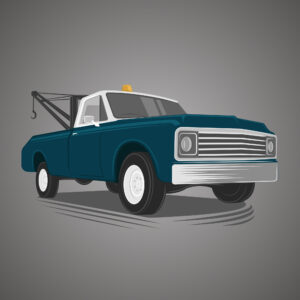 As automobiles continued to evolve, so did tow trucks. In the 1920s, a new type of tow truck emerged – the wheel-lift tow truck. Instead of using chains, this design used a hydraulic mechanism to lift vehicles by their wheels, reducing damage and making towing more efficient. This innovation was quickly adopted by towing companies and became the standard for decades to come.
As automobiles continued to evolve, so did tow trucks. In the 1920s, a new type of tow truck emerged – the wheel-lift tow truck. Instead of using chains, this design used a hydraulic mechanism to lift vehicles by their wheels, reducing damage and making towing more efficient. This innovation was quickly adopted by towing companies and became the standard for decades to come.
In the 1970s, another significant development in tow truck technology took place – the introduction of the quick-pick tow truck. This type of tow truck featured a boom arm with a pivoting attachment at the end that could be moved and positioned quickly, allowing for faster and safer pickups. The quick-pick tow trucks are still widely used today, alongside other advanced variations such as flatbed tow trucks and integrated wheel-lift tow trucks.
As cars became more mainstream in the 1920s, so did the need for efficient roadside assistance. Tow trucks quickly gained popularity as a reliable means to transport disabled vehicles. With the rapid growth of car ownership and road travel, tow truck businesses emerged across the country. The industry continued to flourish through World War II and into the post-war era.
In the 1950s, tow trucks underwent a significant change with the introduction of hydraulic lift systems. This allowed for more efficient loading and unloading of vehicles, making towing operations faster and safer. The design also evolved to include flatbed tow trucks, which could accommodate larger or heavier vehicles without damaging them.
Early Development and Models
Holmes’ invention, patented in 1918, marked the beginning of the tow truck industry (Back Then History, 2023). The Holmes 485, based on a 1913 Locomobile body, was the first commercially available model. It embodied the rudimentary principles of towing, focusing on functionality over aesthetics. As the number of automobiles on the road increased, so did the demand for efficient roadside assistance, propelling the growth of the tow truck industry.
Technological Advancements and Innovations
Throughout the 20th century, tow trucks underwent significant transformations. The introduction of hydraulic systems, power winches, and boom lifts marked major advancements (Hi-Way Towing, 2023). These innovations not only enhanced the trucks’ capabilities but also improved safety standards. The evolution from simple hook-and-chain systems to wheel-lift and flatbed towing represented the industry’s adaptation to the diverse needs of different vehicles, including larger and more sophisticated models.
Modern Technological Innovations
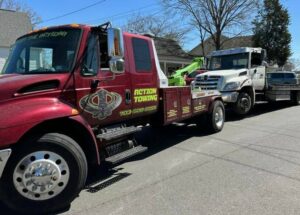 In recent decades, tow trucks have embraced modern technology significantly, leading to more efficient, safe, and versatile machines. GPS technology, for instance, has become a staple in the industry. It enables tow truck operators to pinpoint the exact location of a stranded vehicle, reducing response times and improving service efficiency. Additionally, the integration of computerized controls has further enhanced the precision and safety of towing operations.
In recent decades, tow trucks have embraced modern technology significantly, leading to more efficient, safe, and versatile machines. GPS technology, for instance, has become a staple in the industry. It enables tow truck operators to pinpoint the exact location of a stranded vehicle, reducing response times and improving service efficiency. Additionally, the integration of computerized controls has further enhanced the precision and safety of towing operations.
Remote control systems are another notable advancement. These systems allow operators to control the truck’s loading and lifting functions remotely, reducing the risk of accidents and injuries. Furthermore, the advent of more advanced hydraulic systems has resulted in increased lifting capacity, allowing tow trucks to handle a wider range of vehicles, from compact cars to heavy-duty commercial vehicles.
Lastly, the improvement in lighting systems has been a significant advancement for tow truck safety. LED warning lights, strobe lights, and work lights have proved essential for nighttime operations, increasing visibility and warning other road users of the tow truck‘s presence. These technological advancements have not only enhanced tow truck’s capabilities but have also improved safety and efficiency in the towing industry.
Tow Trucks in the Modern Era
The modern-day towing industry offers a wide range of services beyond just roadside assistance. Tow truck operators now have specialized equipment to handle different types of vehicles, including motorcycles, RVs, and heavy-duty trucks. They also offer emergency towing, long-distance transport, and accident recovery services. With the increasing use of technology, customers can now request tow trucks through mobile apps or track the location of their tow trucks in real time.
The modern era has seen tow trucks become more specialized and technologically advanced. Today’s trucks feature state-of-the-art equipment, including integrated GPS systems for rapid dispatch and navigation, and advanced stabilization technology to handle a wide range of towing tasks (Serious Truck, 2023). This era also marks a shift towards eco-friendly and electric tow trucks, reflecting the industry’s commitment to sustainability.
Tow Trucks and Roadside Assistance Today
Tow trucks today are more than just recovery vehicles; they are vital for maintaining traffic flow and safety on roads. They play a critical role in urban management, clearing accident scenes promptly and assisting law enforcement by removing illegally parked vehicles (Tow Crane, 2023). The cultural impact of tow trucks extends beyond their functional role, symbolizing reliability and timely help in times of need.
Cultural Impact of Tow Trucks
Tow trucks have become cultural icons in their own right, frequently appearing in popular media, literature, and even children’s toys, shaping public perception and cultivating an image of the heroic recovery vehicle. One of the most recognizable examples in popular culture is Mater from Pixar’s “Cars” franchise, a rusty but reliable tow truck character.
Tow trucks have also had a profound impact on roadside culture. From their inception, they have been associated with resilience, resourcefulness, and the spirit of lending a helping hand. These vehicles are often the first to arrive at the scene of a breakdown or accident, providing aid and reassurance to stranded motorists. Their presence on our roads has given rise to a unique form of camaraderie among drivers and an unspoken code of the road, where truckers and motorists alike acknowledge the vital role of tow trucks and their operators.
In a broader societal context, tow trucks have come to symbolize an essential service that aims to ensure safety and order in our increasingly mobile world. This is reflected in the way we honor tow truck drivers during significant events such as the annual “Spirit Ride” in the United States, where processions of tow trucks across the country spread awareness about the “Move Over” laws, endorsing safety for all roadside workers. Through their functional role and their representation in societal narratives, tow trucks continue to leave an indelible mark on our cultural landscape.
Commercial Towing Companies and Traffic Management
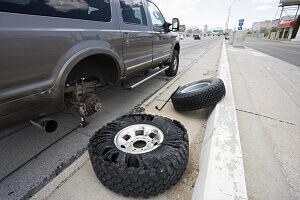 Commercial towing companies play a crucial part in maintaining smooth traffic flow and overall road safety. They work closely with traffic management authorities and law enforcement agencies to respond swiftly to incidents that disrupt traffic, such as accidents, vehicle breakdowns, or illegal parking.
Commercial towing companies play a crucial part in maintaining smooth traffic flow and overall road safety. They work closely with traffic management authorities and law enforcement agencies to respond swiftly to incidents that disrupt traffic, such as accidents, vehicle breakdowns, or illegal parking.
The rapid response times of these companies not only aid in reducing traffic congestion but also prevent potential secondary accidents caused by stranded vehicles. Additionally, they assist in enforcing parking rules by removing improperly parked vehicles that could obstruct traffic or emergency services. In essence, commercial towing companies are the unsung heroes of traffic management, working round the clock to keep our roads safe and efficient.
Tow Trucks in Emergency Situations
 Tow trucks play a critical role in emergency situations, providing swift and efficient roadside assistance. When accidents occur, tow trucks are often among the first responders on the scene, helping to clear wreckage and prevent further traffic disruption. They make it possible to quickly move damaged vehicles, reducing the risk of secondary accidents caused by obstructions on the road.
Tow trucks play a critical role in emergency situations, providing swift and efficient roadside assistance. When accidents occur, tow trucks are often among the first responders on the scene, helping to clear wreckage and prevent further traffic disruption. They make it possible to quickly move damaged vehicles, reducing the risk of secondary accidents caused by obstructions on the road.
Moreover, tow trucks are indispensable in non-collision emergencies such as vehicle breakdowns or instances where a vehicle is stuck due to harsh weather conditions. The versatility of modern tow trucks allows them to handle a variety of situations, from rescuing a small car stuck in the mud to recovering a large truck from a roadside ditch. Through these roles, tow trucks contribute significantly to maintaining road safety and efficient traffic flow, underscoring their invaluable role in emergency management on our roads.
The Future of Tow Trucks and Emerging Technologies
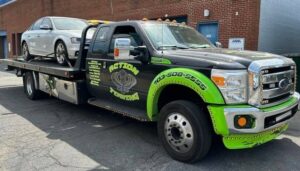 As we move into the future, the towing industry is likely to continue its trajectory of innovation and adaptation. Emerging technologies are poised to revolutionize the way tow trucks operate, enhancing both their effectiveness and safety. Autonomous driving technology, although still in its nascent stages, holds significant promise. Advanced sensors and computing power could enable tow trucks to reach breakdown sites quickly and safely, even in heavy traffic. Additionally, we are likely to see more electric tow trucks, as the push towards sustainability intensifies. These eco-friendly trucks would help reduce the industry’s carbon footprint, aligning with global efforts to combat climate change.
As we move into the future, the towing industry is likely to continue its trajectory of innovation and adaptation. Emerging technologies are poised to revolutionize the way tow trucks operate, enhancing both their effectiveness and safety. Autonomous driving technology, although still in its nascent stages, holds significant promise. Advanced sensors and computing power could enable tow trucks to reach breakdown sites quickly and safely, even in heavy traffic. Additionally, we are likely to see more electric tow trucks, as the push towards sustainability intensifies. These eco-friendly trucks would help reduce the industry’s carbon footprint, aligning with global efforts to combat climate change.
Another promising development is the integration of artificial intelligence (AI) and machine learning algorithms into the towing process. This could allow tow trucks to assess the condition of broken-down vehicles, predict potential issues, and even perform minor repairs on-site. Moreover, the use of drones in conjunction with GPS technology could help in locating vehicles in hard-to-reach areas, providing precise coordinates to tow trucks and therefore speeding up the recovery process.
In terms of equipment, improvements in materials science could lead to stronger, more durable tow cables and winches. Furthermore, the development of advanced stabilization technologies could allow for safer and more efficient handling of heavy-duty towing tasks.
Overall, the future of tow trucks is set to be shaped by a blend of technological advancements and a renewed commitment to sustainability, safety, and efficiency. These trends will help ensure that tow trucks remain an essential component of our transportation ecosystem in the years to come.
Conclusion
From their humble beginnings to the high-tech machines of today, tow trucks have evolved into a vital component of the transportation infrastructure. Their development reflects broader technological, economic, and cultural shifts and their story is a testament to human ingenuity and the relentless pursuit of efficiency and safety in transportation.
Sustainability in the Towing Industry
The importance of sustainability in the towing industry cannot be overstated. As an integral part of the transportation sector, it has a responsibility to contribute to global efforts to reduce carbon emissions and environmental impact. Eco-friendly initiatives such as the adoption of electric tow trucks and the utilization of renewable energy sources for operations are significant steps in this direction. Transitioning to electric tow trucks not only decreases carbon emissions but also reduces noise pollution, enhancing the quality of life in urban areas. Furthermore, the implementation of renewable energy sources in operations can lead to substantial cost savings over time, fostering both environmental and economic sustainability. The towing industry’s commitment to sustainability reflects its readiness to adapt and evolve in response to the pressing environmental challenges of our time.
The Human Element: Tow Truck Operators
Behind every tow truck is a skilled and dedicated operator. These individuals play an essential role in the safe and efficient operation of tow trucks, often working in challenging conditions to provide timely assistance to drivers in need. They undergo rigorous training and certification processes, ensuring they possess the necessary skills and knowledge to handle diverse towing situations safely. Furthermore, tow truck operators are adept at navigating complex legal and regulatory frameworks, ensuring they operate in accordance with applicable laws and standards. Their contribution to the towing industry is invaluable and deserves recognition.
In conclusion, tow trucks are a critical component of our transportation infrastructure, performing essential roles such as traffic management, emergency response, and roadside assistance. As we move towards a more sustainable future, tow trucks are also poised to embrace emerging technologies that will enhance their effectiveness and safety. However, we must not forget the human element behind these machines – the skilled operators who make it all possible. The continued evolution of tow trucks is a testament to our ability to adapt and innovate in response to changing needs and circumstances, making them an integral part of the modern transportation landscape.
References
Back Then History. (2023). The History of Tow Trucks. Retrieved from backthenhistory.com.
Guy’s Towing Service. (2023). A Brief History of Towing and Tow Trucks. Retrieved from guystowingservice.com.
Hi-Way Towing. (2023). Five Facts about the History of Tow Trucks. Retrieved from hiwaytowing.com.
Lit Gear Shop. (2023). Evolution of Tow Trucks: Past to Present Innovations. Retrieved from litgearshop.com.
Serious Truck. (2023). The Evolution of the Tow Truck Industry: From Roadside Assistance to… Retrieved from serioustruck.com.
The News Wheel. (2023). The Evolution of the Tow Truck. Retrieved from thenewswheel.com.
Tow Crane. (2023). The History and Evolution of Tow Trucks. Retrieved from towcrane.com.
Your AAA Network. (2023). The History of the Tow Truck. Retrieved from magazine.northeast.aaa.com.
